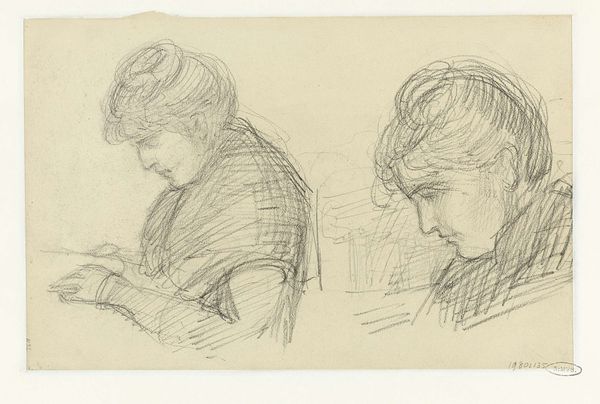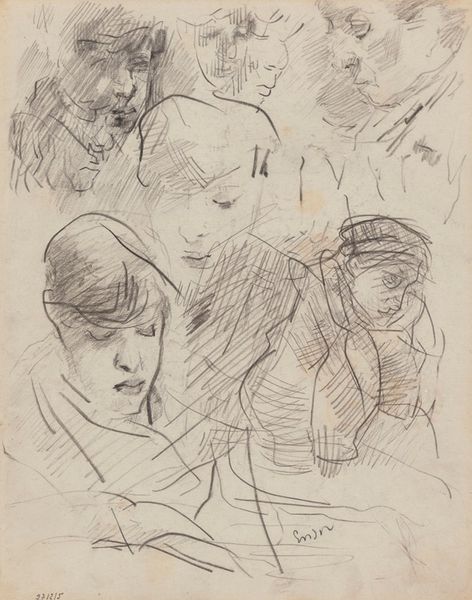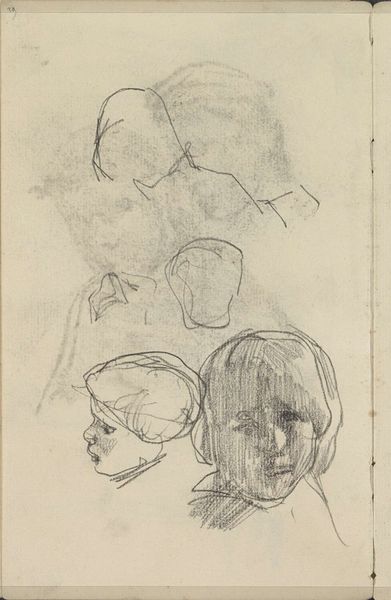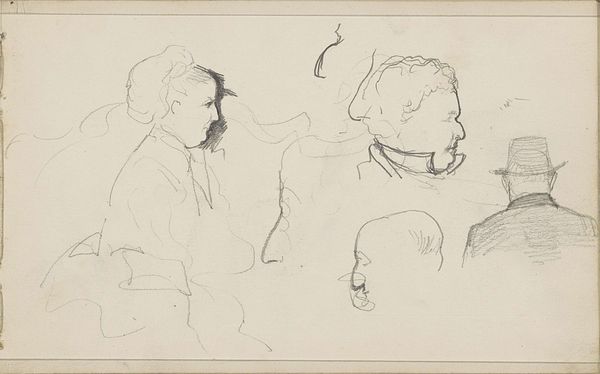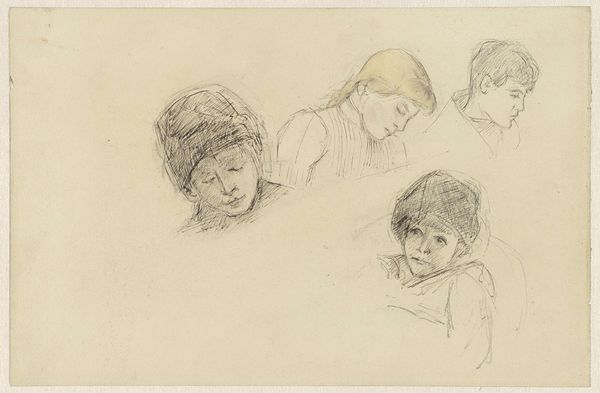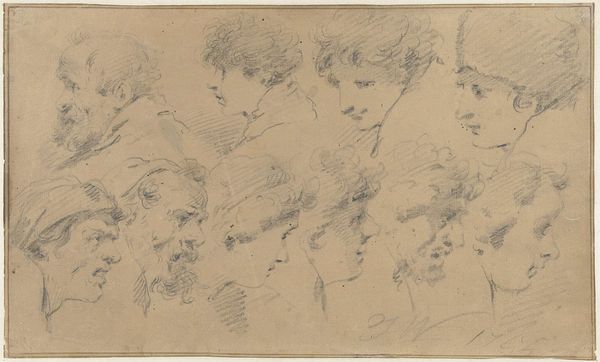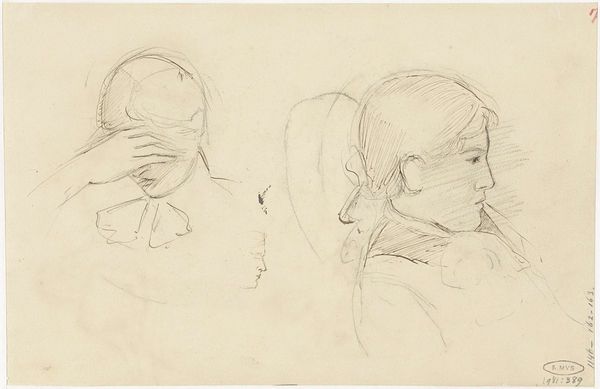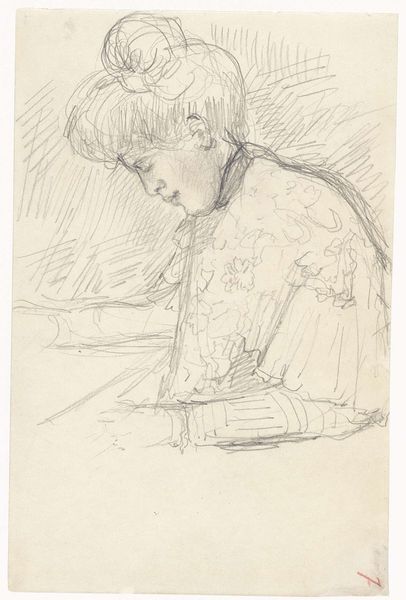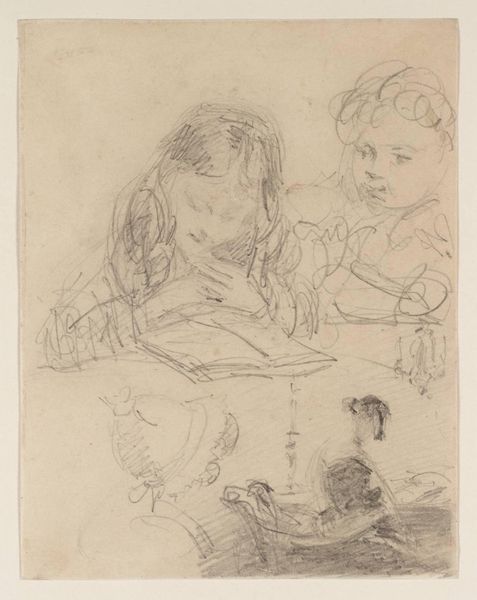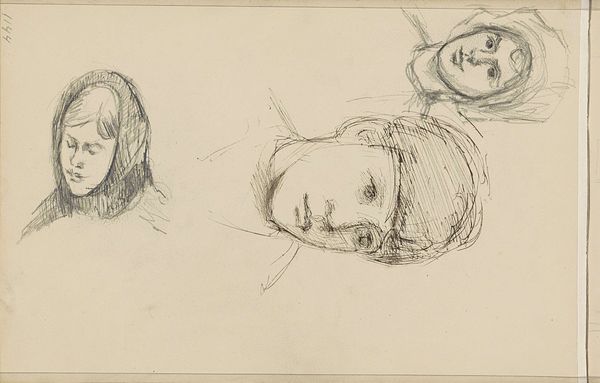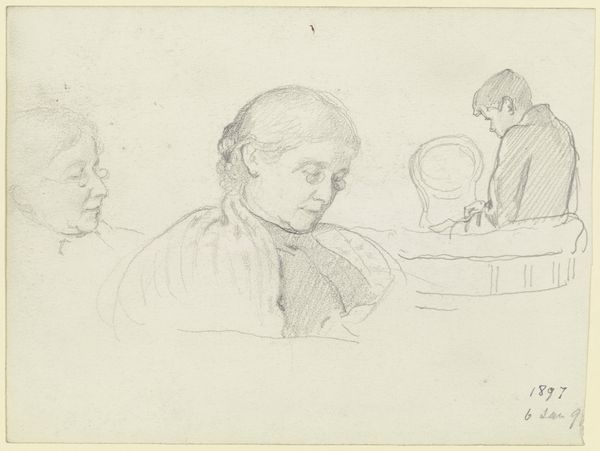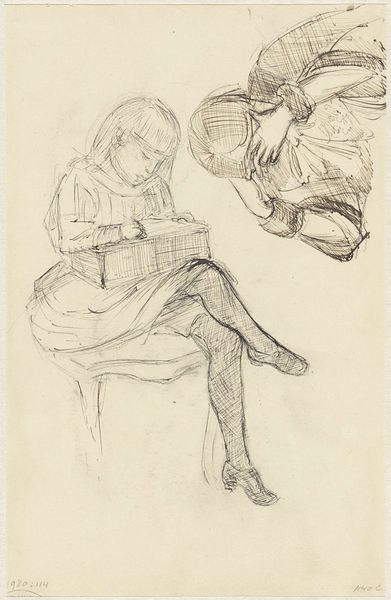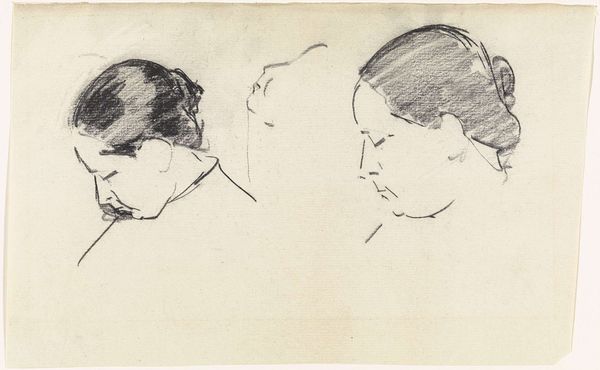
drawing, ink
#
portrait
#
drawing
#
figuration
#
ink
#
genre-painting
Dimensions: height 290 mm, width 190 mm
Copyright: Rijks Museum: Open Domain
Curator: Jozef Israëls, an artist situated within the Hague School, sketched "Vier studies van een lezende jongen," sometime between 1834 and 1911, employing ink in what appears to be a rapidly executed study. It currently resides here at the Rijksmuseum. Editor: There’s something incredibly tender about this piece. Despite the simplicity of the medium, ink on paper, the posture and demeanor of the boy is evocative of vulnerability and intense concentration. It also speaks to me about the societal expectations we assign based on age, race and class. I immediately begin to wonder if the image carries a particular symbolic meaning tied to the social milieu it was originally made within. Curator: Indeed, the act of reading is rarely depicted neutrally. It is freighted with socio-cultural significance. Consider how literacy and access to education historically empowered certain classes while simultaneously marginalizing others. These “studies” capture the solitary pursuit of knowledge. Look at the different positions in which he renders the subject. In what ways does this simple sketch function as a study of a subject's inner and outer world? Editor: This really connects with the broader discourse around child labor and exploitation during that period. Depicting a young boy engaged in intellectual labor, instead of manual labor, presents a potent visual narrative. You begin to see this child not just as an individual but as a representative of broader socio-political tensions. How does access to literacy shape their world view, especially considering who controls that access? The drawing subtly asks: who is allowed to learn, and what are they allowed to learn? Curator: I'm also intrigued by the repetition itself, the serial presentation of the boy's likeness. Are we witnessing an attempt to capture his evolving consciousness or perhaps, his fluctuating emotional state while immersed in the text? What narrative purpose does it serve to present not one definitive portrait but a collection of ephemeral impressions? The symbols related to intellect also offer pathways to freedom from labor, something highly relevant to this time. Editor: That idea of repeated attempts offers interesting questions around the intersection of visibility and representation. Are we really "seeing" the boy, or are we witnessing iterations of projected desires and societal aspirations mapped onto him? It forces us to reflect on who constructs the narrative and whose gaze shapes the story. Ultimately, art prompts us to be critically aware of these dynamics, not only in the depicted historical context, but even in contemporary power structures. Curator: Precisely, that layering of symbolic weight and historical insight enriches the viewing experience, providing endless opportunity for interpretation. Thank you for your perspectives. Editor: It was my pleasure. Thanks for drawing attention to these important cultural intersections within this sketch.
Comments
No comments
Be the first to comment and join the conversation on the ultimate creative platform.
